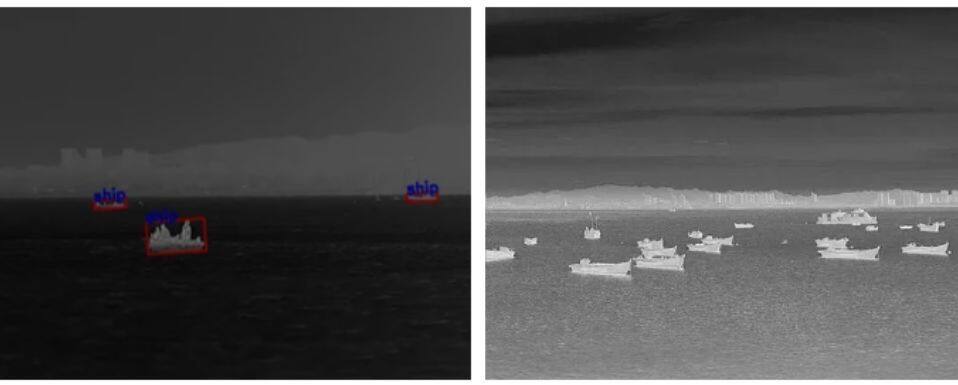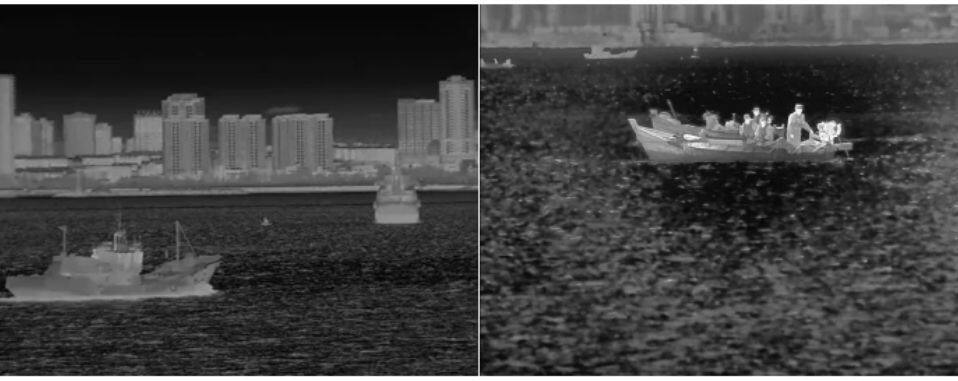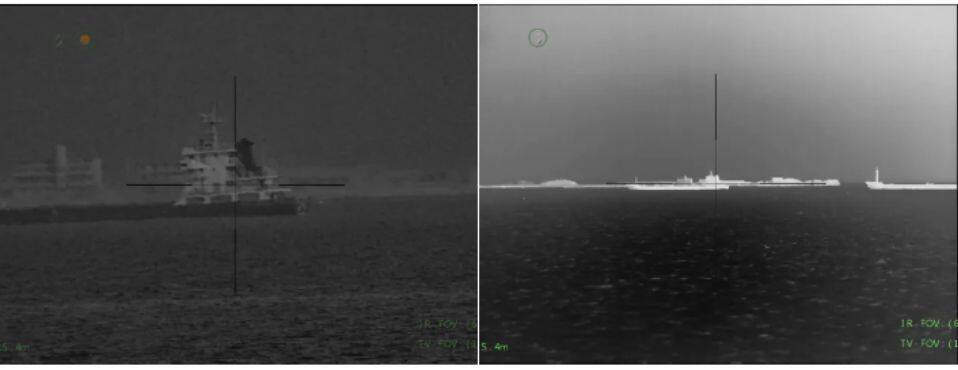-
 Karina
Hi there! Welcome to my shop. Let me know if you have any questions.
Karina
Hi there! Welcome to my shop. Let me know if you have any questions.
Your message has exceeded the limit.

Does Thermal Imaging Work Underwater?
2025-07-31 14:42:41
Infrared thermal imaging, known for its advantages such as independence from visible light and all-weather sensing capabilities, has been widely used in security, industrial inspection, and emergency rescue. As infrared technology continues to evolve and the demand for marine exploration and underwater rescue operations grows, the question “Can thermal imaging cameras work underwater?” has attracted increasing attention from users.
This article explores the technical limitations of thermal imaging in underwater environments by examining the principles of thermal imaging and the impact of water on infrared transmission. It also discusses the practical value of thermal imaging in aquatic scenarios through typical water-related use cases, offering users reliable infrared sensing strategies for handling complex aquatic tasks.
The stable performance of infrared thermal imaging in air is largely due to the good transmissivity of infrared radiation within specific “atmospheric window” wavelengths—namely, 1–3 μm, 3–5 μm, and 8–14 μm. In these spectral ranges, atmospheric absorption is minimal, allowing infrared radiation emitted by ground or aerial targets to pass through the atmosphere and reach the imaging device.
In contrast, the transmission of infrared radiation in water is significantly reduced. Particularly in the long-wave and much of the mid-wave infrared bands, infrared energy is almost entirely absorbed by water, severely limiting its propagation.
Moreover, heat from objects dissipates quickly in water due to its high thermal conductivity, which reduces the temperature contrast between the target and its surroundings—making it even harder for thermal imaging systems to distinguish objects.
As a result, conventional infrared thermal imaging devices are not suitable for fully submerged underwater imaging. Instead, they are better suited for surface-level, shallow water, or shoreline scenarios where the sensor remains above water or in partial contact with it.
2.Typical Water Environment Application Scenarios: The Practical Value of Thermal Imaging2.1 Maritime Target Surveillance and IdentificationInfrared thermal imaging cameras offer exceptional all-weather imaging capabilities without relying on visible light. They can operate reliably even in low-visibility conditions such as nighttime, overcast skies, rain, or fog. These devices can sensitively detect heat signatures from ship engines, deck activities, and human body temperatures, enabling long-range, high-precision target identification and dynamic tracking. When combined with automatic cruise modes, they allow for continuous and high-frequency image capture and monitoring of key maritime areas, significantly improving patrol efficiency. This technology is widely used in combating illegal fishing, smuggling, and other unlawful maritime activities.

Infrared thermal imaging devices possess excellent temperature difference detection capabilities, clearly highlighting the heat contrast between the water surface and human bodies. Even in extremely low-visibility sea conditions such as darkness, dense fog, and rough waves, they can quickly locate persons overboard, significantly improving response efficiency within the critical “golden rescue time.” During sudden incidents like ship fires, infrared thermal imaging can also identify overheated areas of the vessel in real time, assisting in assessing fire development. This provides crucial visual support for formulating scientific rescue plans and coordinating resources, thereby effectively enhancing the accuracy and timeliness of overall rescue operations.

In critical areas such as dock operation zones, container yards, warehouses, oil storage areas, and port power systems, infrared thermal imaging cameras provide 24/7 continuous temperature monitoring. They can detect potential hazards like machinery overheating, electrical faults, and abnormal temperature rises in storage yards in real time, issuing early fire warnings that significantly enhance the timeliness and accuracy of fire response.
Furthermore, combined with intelligent analytics algorithms, these systems can automatically identify and track abnormal behaviors such as unauthorized personnel intrusion, loitering, and boundary crossing. Alarm information is instantly pushed to the security center through an integrated platform, enabling intelligent and refined security management of key areas. This technology effectively reduces labor costs for patrols and false alarm rates, improving overall operational safety, and serves as a critical core device in building a “smart port” fire safety system.

Infrared thermal imaging cameras can reliably deliver clear thermal images even in extremely low-visibility conditions such as nighttime, heavy fog, rain, or snow, effectively overcoming visual limitations caused by insufficient lighting and harsh weather. They provide all-weather identification of key targets in navigation routes, including other vessels, buoys, shorelines, and floating debris. This assists crew members in real time during docking, navigating narrow channels, or traversing complex waters by maintaining situational awareness of the surroundings, enabling early obstacle avoidance and reducing the risk of collisions and groundings. It serves as a reliable safeguard to enhance navigation safety and efficiency for various types of vessels such as commercial ships and fishing boats.


4.2 PC6 Series Dual-Spectrum PTZ Camera

4.3 PC4 Series Dual-Spectrum PTZ Camera

4.4 PC2 Series Dual-Spectrum PTZ Camera

4.5 FC4 Series Dual-Spectrum Bullet Camera

4.6PD4 Series Dual-Spectrum Speed Dome Camera

Tags: Thermal Imaging, Thermal imaging camera, thermal cctv

